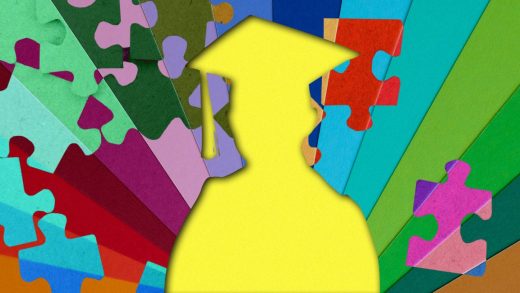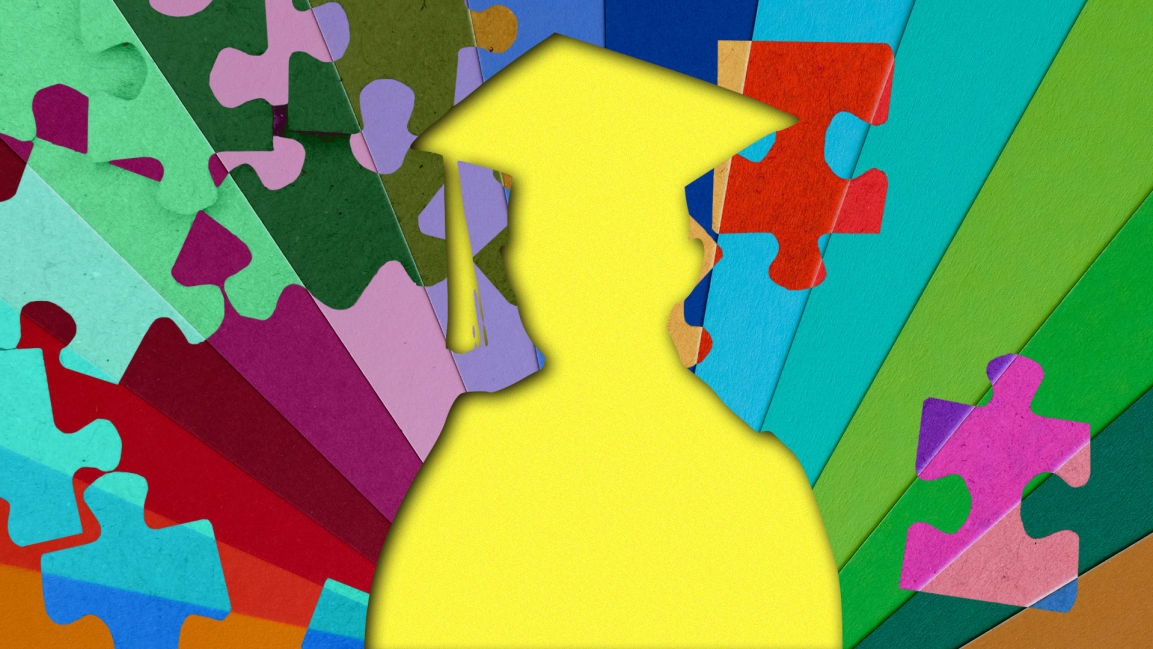I spent 3 weeks of quarantine trying to learn something new. Here’s what happened
It didn’t take long to get sick of Zoom.
The novelty of staring at my family and friends on a laptop while eating pasta fell away like used gift wrap, and pretty soon those daily video chats faded from the quarantine routine.
It didn’t take long to tire of Netflix, either.
Ditto Hulu, HBO Now, and Amazon Prime. After a while, the almost aggressively vast libraries of viewing options somehow all managed to feel equally tedious.
Lots of other indoor activities lost their luster as well. I’ll spare you the details.
It wasn’t that I was totally devoid of things to do with my burgeoning wellspring of time at home—I was just mildly depressed, extremely anxious, and running 108-degree cabin fever.
That’s when it hit me: I couldn’t change my surroundings, but perhaps I could change myself.
No, I wasn’t interested in a midlife full-uniform goth phase, but rather trying out some distance learning.
I’d seen online ads for Skillshare, which invited all curious comers to “take the next step in their creative journey.” I’d heard about Teachable, whose hook is its broad range, with over 310K courses available. Then there was MasterClass, which has generated so much heat by recruiting some of the most celebrated creatives in their respective fields that it has achieved full-on meme status and been parodied on SNL.
In early April, I decided to spend the next few weeks exploring the world of online learning, as much for the possibility of enlightenment as for the entertainment value.
Writing King Lear during this pandemic seemed unrealistic. But watching someone try to teach me how to write King Lear could be fun.
Failing that, at the very least I could learn to poach a damn egg.
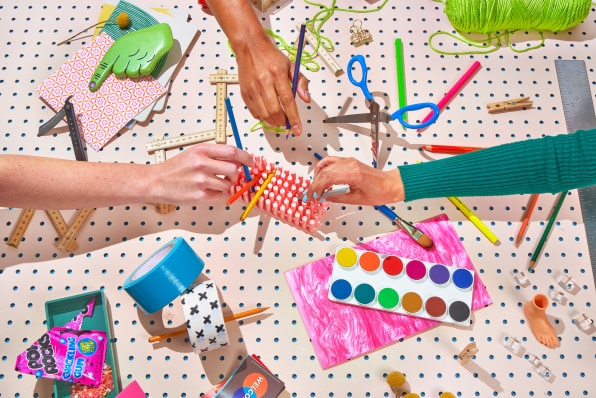
What’s out there
Obviously, I wasn’t the only one suddenly embarking on a remote learning adventure. Aside from all the students around the country at every level who suddenly found themselves homeschooled in the pandemic, there was a pronounced new interest from hobbyists like me. In the middle of March, Teachable experienced a huge surge in enrollment, for instance, growing 45% week-over-week at the beginning of quarantine, and 30% more the following week.
To encourage the newfound flood of interest, and cut homebound and/or recently laid-off folks a break, the company made 20 sample courses free to the public. In a similar move, while Skillshare already offered free trials to prospective users, the platform also rolled out premium two-month memberships for all eligible students, along with a fresh scholarship program.
Many of us restless souls would be taking the edutainment plunge together.
Scrolling through the three sites felt much different than toggling between streaming services for movies and TV shows. Each one offered a new possibility for which direction my downtime might go for the next three weeks. Unlike mainlining Boardwalk Empire, I would do more than sit there, glazed over, processing plot points while trawling Twitter. Whatever series I chose would be an interactive extravaganza.
There were courses on everything from audio engineering to home gardening to creating, launching, and selling profitable online courses. It’s like that old saying, “Give a man a profitable online course, and he will learn. Teach a man to create, launch, and sell profitable online courses . . .”
I started bookmarking classes that seemed best for the moment (read the room, Stephen Curry Teaches Basketball), cracked my knuckles, and prepared to self-actualize.
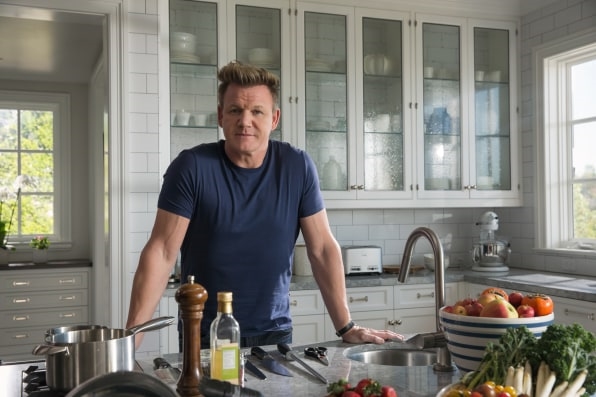
Week One
“I’m not a TV chef,” Gordon Ramsay says while wearing a Spanx-tight navy-blue T-shirt in a kitchen straight out of Nancy Meyers’s dreams.
Ramsey is at least kind of a TV chef. Why else is there footage of him judging an episode of MasterChef Junior in the orientation video for Gordon Ramsay Teaches Cooking I?
The point he’s trying to make is that he’s a chef-chef first, with his TV persona merely fueling a highly lucrative side hustle. He further proves that point with charming anecdotes about how he got started in the food-service industry, generously peppered with a Richard Pryor-sized dollop of cursing.
As I’m getting acquainted with my new instructor, I also soak in the MasterClass platform itself. The courses each consist of about 15 to 20 video lessons, which play against a stark black background. Most of the videos are divided into little subsections, and you can hover your cursor near the bottom of the screen to conjure the progress bar that reveals which one you’re in and what lies ahead.
What immediately separates this program from learning how to cook from the Food Network or a collection of Bon Appetit Test Kitchen videos is an emphasis on fundamentals. There’s a whole lesson on knife skills, for instance, which makes me realize that I have none, along with useful tips on how to look for the right vegetables. There’s also, of course, the main MasterClass value-add, which is that I’m learning all this from Gordon [expletive deleted] Ramsay. A brief aside about fresh rosemary (“the mother of all herbs”) leads to a story about the chef stealing rosemary from the gardens of rich people while cooking at his first restaurant, and then using it in the dishes he probably served right back to those people, which is pretty metal.
It turns out that when Ramsay’s in his element, guiding strangers through the ins and outs of increasingly complicated dishes, he really is an excellent teacher. Were he this patient and affable on the various TV shows built around his antagonistic persona, his ratings would plummet.
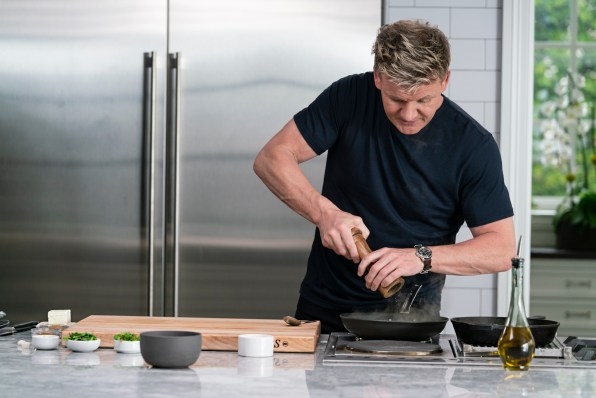
It’s also just kind of comforting, during the chaos of this pandemic, to see such control and competence on display.
Ramsay knows exactly what he’s doing, does it effortlessly, and explains his invisible effort, so I might emulate it. Apparently, I’d been craving the aura of perfectly executed expertise in these traumatic recent weeks, which I only realized as I placed my full stock of trust in Ramsay when gearing up to make his first big dish (poached eggs and mushrooms on brioche).
After getting my feet wet with the cooking MasterClass (but before poaching those eggs), I moved over to Teachable. Since my days had become shapeless under quarantine—each one running into the next, all work and not-work done in the same space—a class on forming habits caught my eye.
Perhaps reshaping my routine in this weird time could knock me out of my doldrums.
The Design Your Habits course is taught by confident-looking Tiago Forte of Forte Labs. Ordinarily, I steer clear of impossibly named self-improvement gurus, but at this point, I’m ready to try anything.
The Teachable platform sets a video lesson across two-thirds of the screen, with a column running down the lefthand side that lists and checks off each lessons in the course as you move along. (A progress bar at the top of the column helpfully shows the percentage of completion, which is satisfying in the same way of Kindle letting you know how much of the new Samantha Irby is left.)
How can I become 1% better every day?
How does my brain create consistency?
These are some of the questions Tiago has me asking myself, and which I hope to answer while hunkered down. The habits I want to form are: doing ab exercises now that gyms no longer exist, and reading a bit every day. Since one of Tiago’s suggestions is to anchor a reward to your habit, I make reading Irby’s book my reward for doing some exercise.
Two birds with one habit!
The lessons hit like a PowerPoint crossed with a guided meditation, with a smattering of no-nonsense pep talk thrown in for good measure. It’s also a relatively quick course. I finish it in two days.
Then comes the hard part: perpetuating my new habit happily ever after.
The gratification of net results comes much quicker with the Ramsay course. I’ll either be able to make that first big dish or I won’t.
I do my best to follow the instructions as I dump a cracked egg into a swirling cauldron of boiling, seasoned water, my laptop perched precariously next to the sink. Some improvisation is required, due to a lack of certain ingredients and my vegetarianism, but the directions are clear, and seeing the chef perform each task is pivotal. It’s like I’m Zooming directly with Ramsay in his disgustingly gorgeous kitchen.
He describes the amounts of salt and butter vaguely sometimes, leaving it up to student interpretation, which I like. However, it’s hard to gauge how hot “nice and hot” is on my stove setting.
In the end, I make one fairly impressive poached egg before getting overconfident and ruining the second one. I give the good egg to my wife, and strategize how to get both eggs right next time.
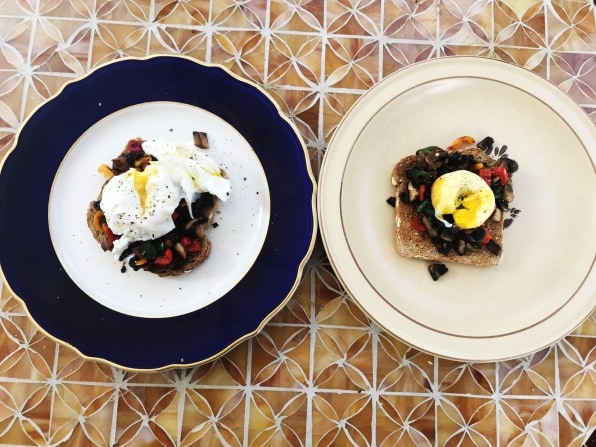
Week Two
Every good story needs a hook at the beginning to set it up.
Or at least that’s what my vlogging instructor says.
Now you probably want to know why, of all things on heaven and earth, I chose a vlogging class.
That’s the hook working its magic!
As I’ve historically been camera-shy, for the reason that I’m a disaster on camera, the beginner’s guide to vlogging on Skillshare held a certain appeal. Ever since the quarantine started, I’ve been on camera more than ever for work meetings and friendly catch-ups.
What even are work meetings and friendly catch-ups anymore but people taking turns vlogging at each other?
The class is taught by Jeven Dovey, a filmmaker and YouTuber with half a million subscribers. He seems typical of most Skillshare instructors, who may not have reached as stratospherically high a success bar as the MasterClass bunch but are still killing it in their respective fields. (Some notable exceptions abound, including supernova Skillshare teachers such as Roxane Gay or Young Guru.)
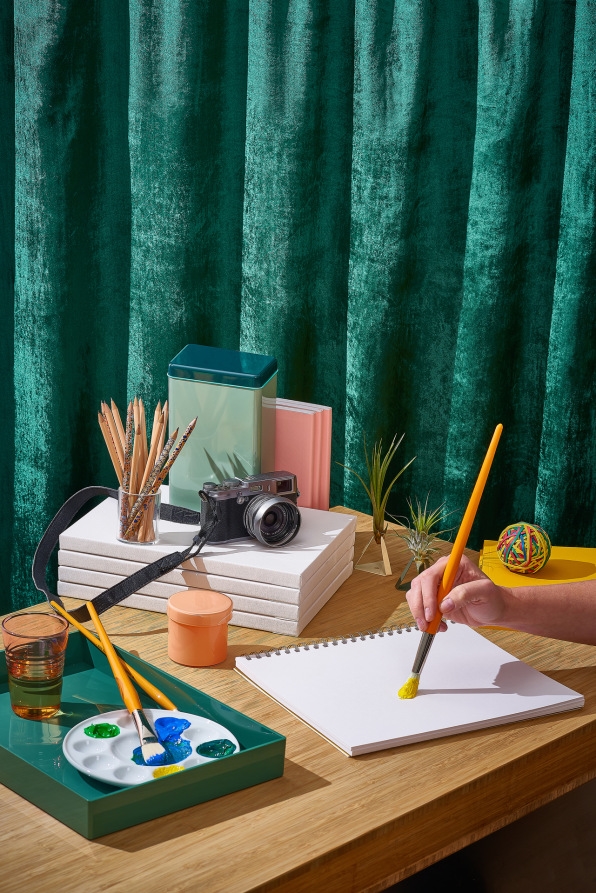
The Skillshare platform is similar to Teachable, only the menu of lessons is on the right side of the screen instead of the left. There’s a live tally at the bottom of the video noting how many students are watching along with you, and it’s interesting to see it go up and down depending on which time of day I start my lesson. Skillshare also has a feature that lets students enter notes for themselves at any point during the video, in addition to the standard comments section. I take my own notes by longhand, because I am 40 and that’s just how we did it a thousand years ago when I went to college.
“Nobody cares about your day,” Dovey deadpans in detailing the do’s and don’ts of vlogging.
It’s harsh but fair. Unless you’re already famous, vlogging is more about storytelling and engaging with your audience, rather than making them “passengers on the train of your journey for the day.”
Some of these lessons do indeed speak to my hope for getting comfortable on camera, but there’s also plenty about shooting B-roll and capturing cinematic footage that is simply beyond my meager vlogging scope while I’m trapped indoors.
I run into the same problem with my Annie Leibovitz Teaches Photography MasterClass.
It’s a different style than the Ramsay one, with one of the world’s greatest master portrait photographers dropping life lessons left and right, occasionally in a classroom setting. Like Ramsay, she has such an authoritative presence that I would hate to let her down, and yet I am unable to, say, photograph an older person in my community, as Assignment #2 suggests. However, she also recommends “photographing the people who will put up with you,” which is good news for me since I’m trapped indoors with the person who legally has to put up with me.
I could listen all day to Leibovitz describe creating the concepts for some legendary photo shoots, such as the 2015 Caitlyn Jenner Vanity Fair cover, and I do, but ultimately the limitations of the moment force me to disappoint my teacher by dropping out.
I also drop out midway through my next attempted course.
The ability to Sketch Like an Architect wouldn’t have been at the top of my list of desired skills. However, it seemed like an artistic endeavor I could work on with my hands that wouldn’t require leaving the house.
My instructor for the Teachable course is Dutch architectural designer David Drazil, who wears the Copenhagen creative’s uniform of a blazer over a graphic tee, and has dark circles under his eyes as though he’d just stayed up all night sketching houses. His course is broken down into six steps, each of which has four parts: the What and the Why, the How, some Tips and Tricks, and then an exercise. By the time I had watched the course trailer and overview and completed a survey, I was already 18% complete and feeling optimistic.
That optimism was circling the drain, though, even before the end of lesson one.
Although the class is mainly for architects in training and enthusiasts with know their stuff, I hoped there might be space for abject amateurs. Like me. After some early hand-holding through the different types of lines involved, though, Drazil tosses us into the deep end to sketch our favorite cities. I am nowhere near ready for this yet.
Even though he explains and demonstrates every step of what I’m supposed to do, it still feels way above my bankrupt pay grade. My landscape sketch of Manhattan looks like the result of a toddler coloring outside the lines on a Denny’s place mat.
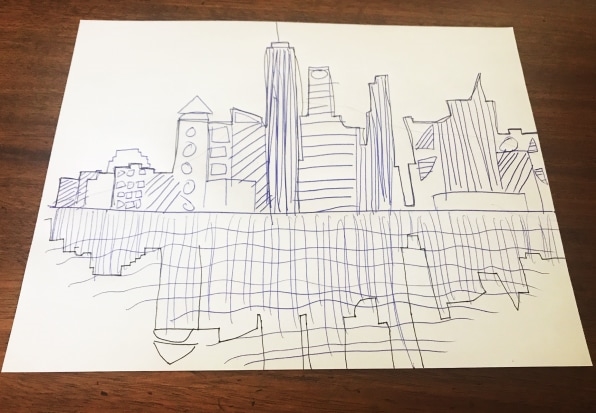
My wife sees me sitting with my face in my hands afterward and compliments my drawing. Then I show her Drazil’s sample drawings.
She silently nods and walks out of the room, barely suppressing a giggle.
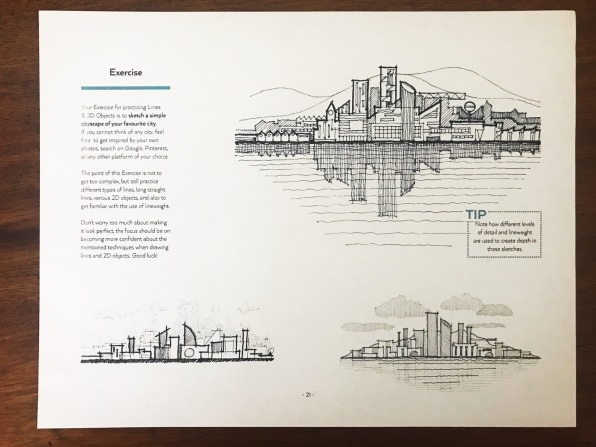
I hang in there for two more lessons before giving up. But the beauty of these distance-learning platforms is that giving up is no big deal. It’s so low-stakes and there are so many alternatives, I can fast-forward past any lessons I don’t feel like participating in, or simply quit midway through if the spirit moves me.
I guess distance learning is kind of like Netflix after all.
Week Three
Heading into the final week of edutainment immersion, I was firing on all cylinders.
Every morning, after tending to the cats and starting a pot of coffee, I did my ab exercises. As per the Tiago Forte system, I left a reminder note near the kitty litter genie that read, “Work out, you lazy jabroni!” so I couldn’t dodge my new habit. Then I drank a cup of coffee during my 20-minute reading reward before officially starting my day. I was taking classes both during lunch and after work, and trying out new Ramsay recipes whenever I could. Hell, I even felt comfortable enough to make a vlog, although not so comfortable that I put it in Skillshare’s project gallery.
Although the main thing I miss about traditional in-person learning is getting instant feedback?—you can contact some instructors online, but it’s not the same?—I didn’t want any feedback whatsoever from other aspiring vloggers on my attempt.
Here it is, though, for the record.
Having dropped the architectural sketch class for being too advanced for me, I searched for a drawing course closer to my Denny’s place mat artist skill level.
I found it on Skillshare, in a class called Getting Started with Drawing.
Instructor Brent Eviston gives me hope right away, describing illustration as a learnable skill rather than an innate gift. “If you can learn to read or write, you can learn to draw,” he says.
It’s just the kind of dynamism I need right now.
As with Ramsay’s class, there’s an emphasis on fundamentals. Each lesson comes with a simple assignment, and some practice.
Lots of practice.
Loads.
I fill up page after page in a notebook, sketching circles and rectangles. At one point, Eviston casually suggests that we double or triple the amount of practice he assigns, on which I decide, absolutely not.
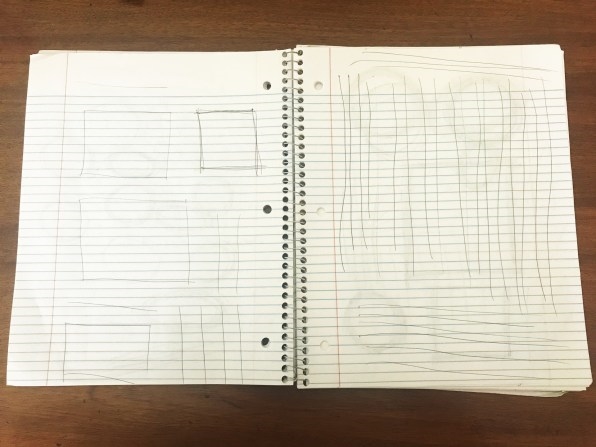
The amount of practice feels excessive, but it takes excessive practice to get truly good at anything. No matter who the teacher is or which hologram or implant chip the teaching format assumes in the future, practice is where learning really happens. I don’t make any major progress in my first week of drawing, but it feels therapeutic to concentrate so hard, to trust a practical process, to see someone perform some technical tweak that drastically alters my approach to a task—even if that task is drawing an oval.
What nearly all of the classes make clear is that education, even of the entertainment variety, is an ongoing project.
You’re not done when the lesson is over.
“Watch and learn, yeah,” Ramsay says in the closing moments of his MasterClass. “But do me a favor: After you’ve watched and learned, go and fucking cook.”
As my three weeks of distance learning conclude, I feel an urgent hunger to continue looking for new abilities to practice, new feats to conquer, new stars to steer by—so long as they’re all indoors.
Maybe I’ll take a knitting class next. I might finally conquer Photoshop.
Is it possible to learn martial arts remotely?
All I know is that trying on new skills for size has swept the cobwebs from the crevices of my brain. Even the things I threw at the wall that didn’t stick seemed to expand the depth of the room I’m always in these days, like I’d entered a new dimension of interiority.
Time moves strangely during quarantine. As Joshua Foer writes in Moonwalking with Einstein, “Monotony collapses time; novelty unfolds it.” Life during this pandemic takes the worst of both worlds and synthesizes them into something new: a bludgeoning state of monotonous novelty.
The days seem to have less of an edge to them, however, when you introduce a positive novelty to counteract the negative ones.
Until we collectively figure out whatever comes next, I’m gonna go and fucking cook.
(50)

